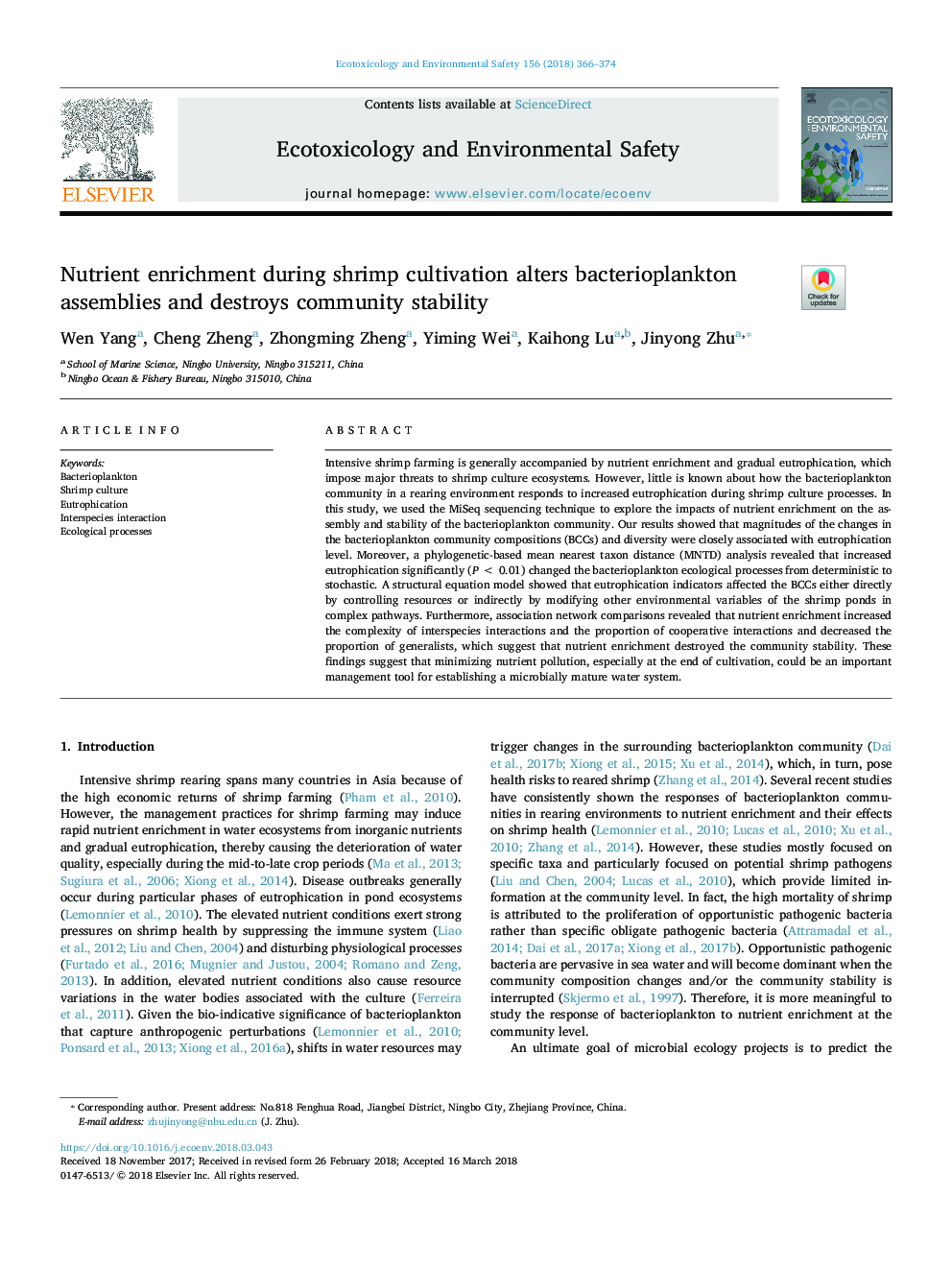| Article ID | Journal | Published Year | Pages | File Type |
|---|---|---|---|---|
| 8854166 | Ecotoxicology and Environmental Safety | 2018 | 9 Pages |
Abstract
Intensive shrimp farming is generally accompanied by nutrient enrichment and gradual eutrophication, which impose major threats to shrimp culture ecosystems. However, little is known about how the bacterioplankton community in a rearing environment responds to increased eutrophication during shrimp culture processes. In this study, we used the MiSeq sequencing technique to explore the impacts of nutrient enrichment on the assembly and stability of the bacterioplankton community. Our results showed that magnitudes of the changes in the bacterioplankton community compositions (BCCs) and diversity were closely associated with eutrophication level. Moreover, a phylogenetic-based mean nearest taxon distance (MNTD) analysis revealed that increased eutrophication significantly (Pâ¯<â¯0.01) changed the bacterioplankton ecological processes from deterministic to stochastic. A structural equation model showed that eutrophication indicators affected the BCCs either directly by controlling resources or indirectly by modifying other environmental variables of the shrimp ponds in complex pathways. Furthermore, association network comparisons revealed that nutrient enrichment increased the complexity of interspecies interactions and the proportion of cooperative interactions and decreased the proportion of generalists, which suggest that nutrient enrichment destroyed the community stability. These findings suggest that minimizing nutrient pollution, especially at the end of cultivation, could be an important management tool for establishing a microbially mature water system.
Related Topics
Life Sciences
Environmental Science
Environmental Chemistry
Authors
Wen Yang, Cheng Zheng, Zhongming Zheng, Yiming Wei, Kaihong Lu, Jinyong Zhu,
